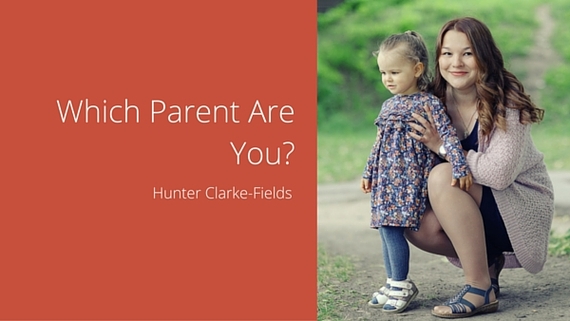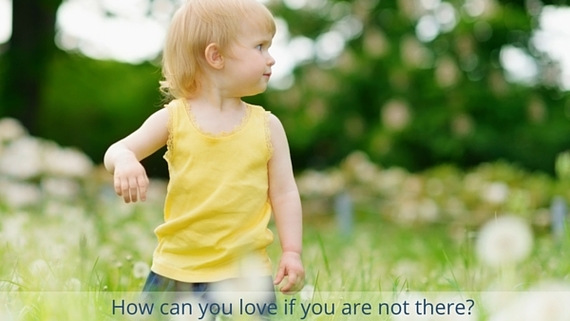Picture yourself in this scenario: it's early Spring. You are walking to the park with your child on one of those warm days that feels like a gift. Winter jackets home on their hooks, you feel the fresh breeze wash over you.
As you walk you notice the crocuses popping up, about to bud. You feel the softness of the ground and the moisture in the air. Your body is relaxed and you feel your breath traveling down into your lungs. You feel the sun on your face and notice the birds singing their spring song.
Your child puts her hand in yours, feeling soft and warm on your cooler skin. Then she slips it away to run off and inspect a worm. You are able to enjoy this day. It's nothing special, but you are awake and present to it.
Now take the same setting, but this time you are pre-occupied with your thoughts.
Items on your to-do list pop to mind. You must remember to put bread on the list when you get home, and what was that other thing? You fear missing something. You remember an uncomfortable encounter with a friend earlier this week and worry that your relationship might be on the rocks. That starts you thinking about your son and his difficulties at school and with his friends.
Your daughter tugs at your hand to go look at a worm. No, you say, you have to get going. You take your phone out of your pocket for a quick check to see if there have been any incoming emails since your walk began.
You are barely aware of your surroundings, caught up in your ruminating thoughts. Your mind is like a see-saw, flipping back and forth between anxieties. You don't really notice your body, but if you did, you'd find that it was tense and constricted like your mind. Your relationship with your child has narrowed down to getting her from here to there, another to-do.
***
The differences in these two scenarios are clear even though these situations might look alike to the casual observer. It's the daily toll of distraction.
It's easy to fall into habits and patterns that take us away from the present moment. We all fall into ruminating thoughts on a daily basis. We need to think and use this powerful tool of our minds to deal with life thoughtfully, but sometimes the tool becomes the master.
We can see, from these scenarios and our own lives, that rumination and getting lost in anxieties take us away from what's real.
Happily, we have clear ways to become more present. Mindfulness practices help us to gain more control over our minds rather than be controlled by them.
What are we talking about when we say "mindfulness?" It means intentionally focusing our attention on what is happening in the present moment with curiosity and kindness, and without judgement.
You can bring your attention into the present moment in any number of ways. The most common way is use the breath as a focal point for the simple reason that it is always with us. This means that wherever you can breathe, you can practice mindfulness. Try it right now: feel your breath as it comes in your nose. Feel your chest expand. Notice what the exhale feels like.
The breath is also a great focal point because it is a physical sensation. Your attention is like a spotlight, so as you focus it on the physical sensation of breathing, it turns that spotlight away from rumination and worry. As soon as you become present in your physical reality, you feel better.
However, you can also focus that spotlight of attention on the sounds that you hear, what you see, or perhaps the person you're with -- in our scenario, your child.
When we focus our attention on the here and now, magical sparkles don't shoot from the sky and make life grand. Instead we realize that life is "just this." The unpleasant build up of worries are just thoughts, and thoughts are not real.
Coming into the present brings us into the only place where we can live life and make change. It is also the only place where we can connect with the ones we love. This quote from Thich Nhat Hanh sums this up:
"When you love someone, the best thing you can offer is your presence. How can you love if you are not there?"
We can all practice mindfulness. The trouble is, that we forget. It's easier to fall into the habit of distraction. So how do we remember to be mindful?
The first step is to set an intention to be mindful. Let's take our walking-to-the-park scenario. As you leave the house, make a choice to walk with awareness of your breath, your surroundings, and your child. Remember that your attention is like a spotlight and you can learn to manage its direction. Set an intention to appreciate your environment and the sensation of walking. Set an intention to enjoy it.
The second step is to practice becoming aware of your distraction. Because you are a human being, you will quickly become distracted by your thoughts. That's perfectly normal and expected, so no harsh self-talk. Use kindness. When you notice, label it in your mind, "thinking." You can become more specific too. If you notice yourself wanting to pull out your phone you can label it, "craving distraction."
It's important to know that, at first, becoming aware of your thoughts can feel crazy because it seems like mind is like a runaway train. Don't worry! That's normal. It's called "monkey mind." Because you were lost inside these thoughts before, you were not so aware of them. Now that you've become aware of them, your mind may seem more unsettled than before. It's all part of the process of becoming present. Remember that simply noticing is a win. It's more than half the work, so celebrate it when you notice your distraction.
The third step is to bring your attention back to your breath and surroundings. Repeat. Mindfulness is not something that we learn once and we're done. It's a continual practice of bringing that spotlight of attention back into the present moment. It takes conscious practice for a very long time.
Consider it the workout for your mind. You are building the muscle of attention that is quite weak for most of us. It takes a lot of daily reps and you increase your mindfulness strength over time.
You will not be able to able to be able to be present for long stretches of time at first, so give yourself smaller bits of practice daily. You can increase over time.
***
Why practice to be present? The benefits include more focus, decreased stress, increased self-regulation, better sleep, a better immune system and more.
For me, the most important reason is so I can show up for my family and life without all the layers of anxiety and depression that used to stop me from living fully. I am more aware of the beauty in my world. I can really be there to love my children.
Want to bring mindfulness practice into your life? Click here to learn and practice with my virtual mindfulness retreat.
Now it's your turn.
Why do you want to be more present? Start the conversation in the comments below!

